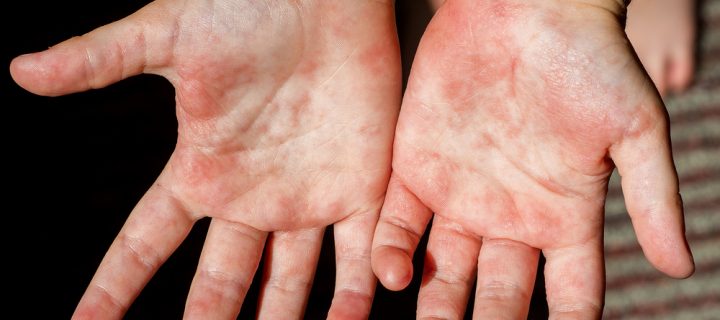Most are mild and treatable but some end up being deadly.
Group Strep A is a type of bacteria, group A Streptococcus, that causes many different illnesses. If you’ve heard of scarlet fever in the news lately, and how it’s caused the death of children in the UK, this is one of them. Most people who develop an infection caused by this bacteria are treated and recover rather quickly, however.
Here’s a brief look at some of the illnesses caused by Strep A, what to look for, and how they’re treated.
Strep Throat
Strep throat is most common in kids but can happen in anyone of any age. This infection causes a painful sore throat that often comes on rather quickly and makes it painful to swallow. It can cause red dots to form in the throat and white patches on swollen tonsils. Strep throat can also result in a fever, body aches, a rash, and even vomiting.
You can catch strep throat by inhaling infected droplets from someone’s sneeze, or drinking from the same glass as an infected person. You can also catch this infection by touching an infected door handle and transferring the bacteria through your nose, mouth, or eyes.
Strep throat is treated with antibiotics and rest. It’s important to take your full round of antibiotics and to get rid of the infection completely as, if left untreated, it can lead to permanent damage including kidney inflammation, scarlet fever, rheumatic fever, and poststreptococcal reactive arthritis.
Related: The difference between masks and respirators
Scarlet Fever
Scarlet Fever is an infection that surfaces when group A Strep bacteria make a toxin that causes a skin rash and a sore throat. The rash is red and feels rough like sandpaper. This infection can also cause a red and bumpy tongue, a headache, abdominal pain, and body aches, among other symptoms. Your doctor can perform a throat swab to see if you have strep and prescribe antibiotics if you test positive. As with strep throat, if left untreated Scarlet Fever can also lead to permanent complications. Antibiotics are used to kill off the bacteria.
Impetigo
Impetigo is a highly contagious skin infection that causes red sores on the face, hands, and feet. This type of infection is most common in young children and infants. This infection spreads through shared and infected towels, blankets, and close contact with infected skin. The bacteria that causes this infection can also enter your skin through tiny cuts or even bug bites. People with weakened immune systems, the young, and the elderly are more likely to develop this infection, which is treated with antibiotics.
Rheumatic Fever
Rheumatic fever is believed to be an inflammatory response and your immune system’s reaction to a previous infection. This type of condition can affect your skin, brain, heart, and joints and can develop after a Strep-caused infection isn’t treated properly. The good news is that rheumatic fever isn’t contagious but the bad news is, it can lead to long term heart damage that may require medication for life. This occurs when the valves of the heart weaken and don’t work properly, causing heart disease. Antibiotics are used to help patients recover but some symptoms can be lasting.
These are just some of the infections caused by Group A Strep. A strep infection is serious and should be addressed by a doctor quickly and antibiotics taken as directed. If your infection doesn’t clear up in the proper amount of time, contact your doctor. You could require a different type of antibiotic to clear your infection. Get treated and protect your health.
photo credits: Kachor Valentyna/Shutterstock.com











